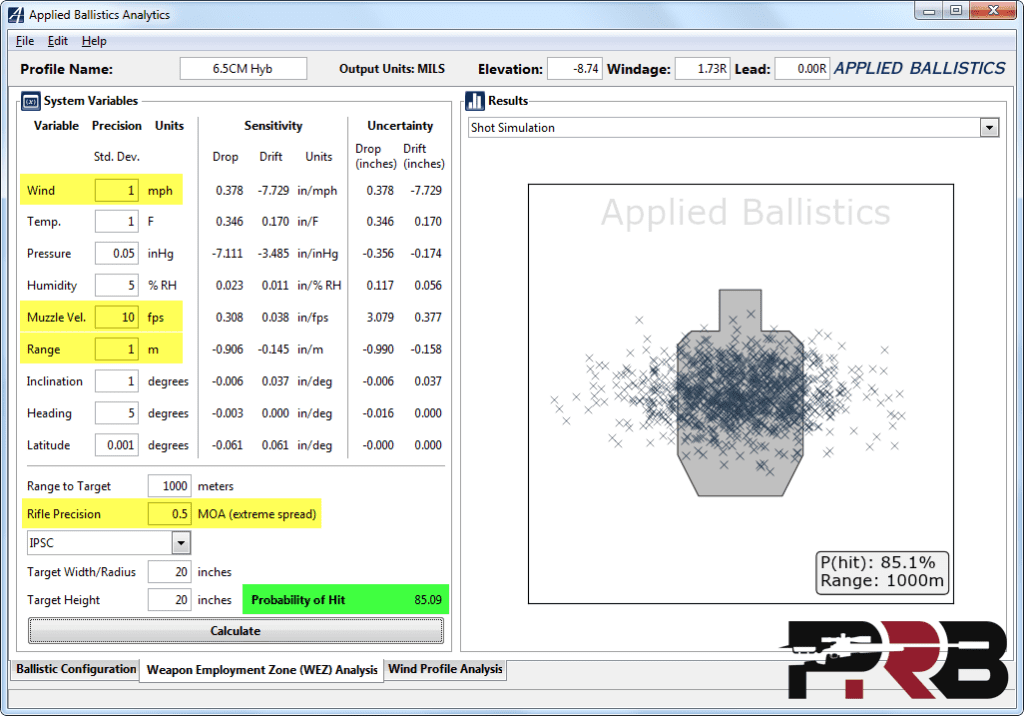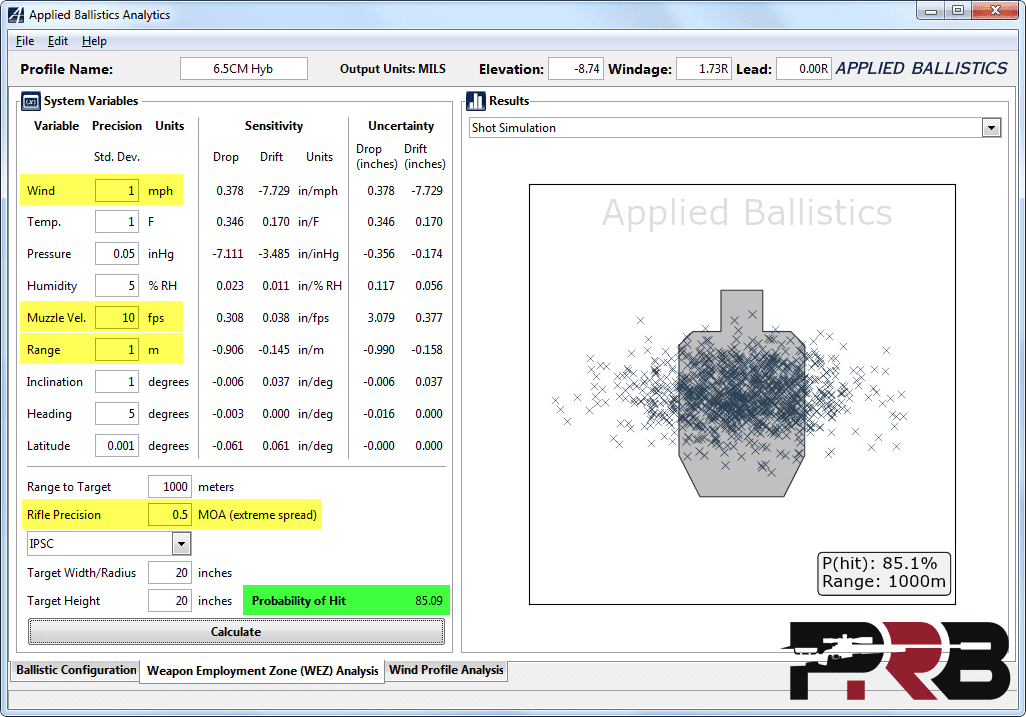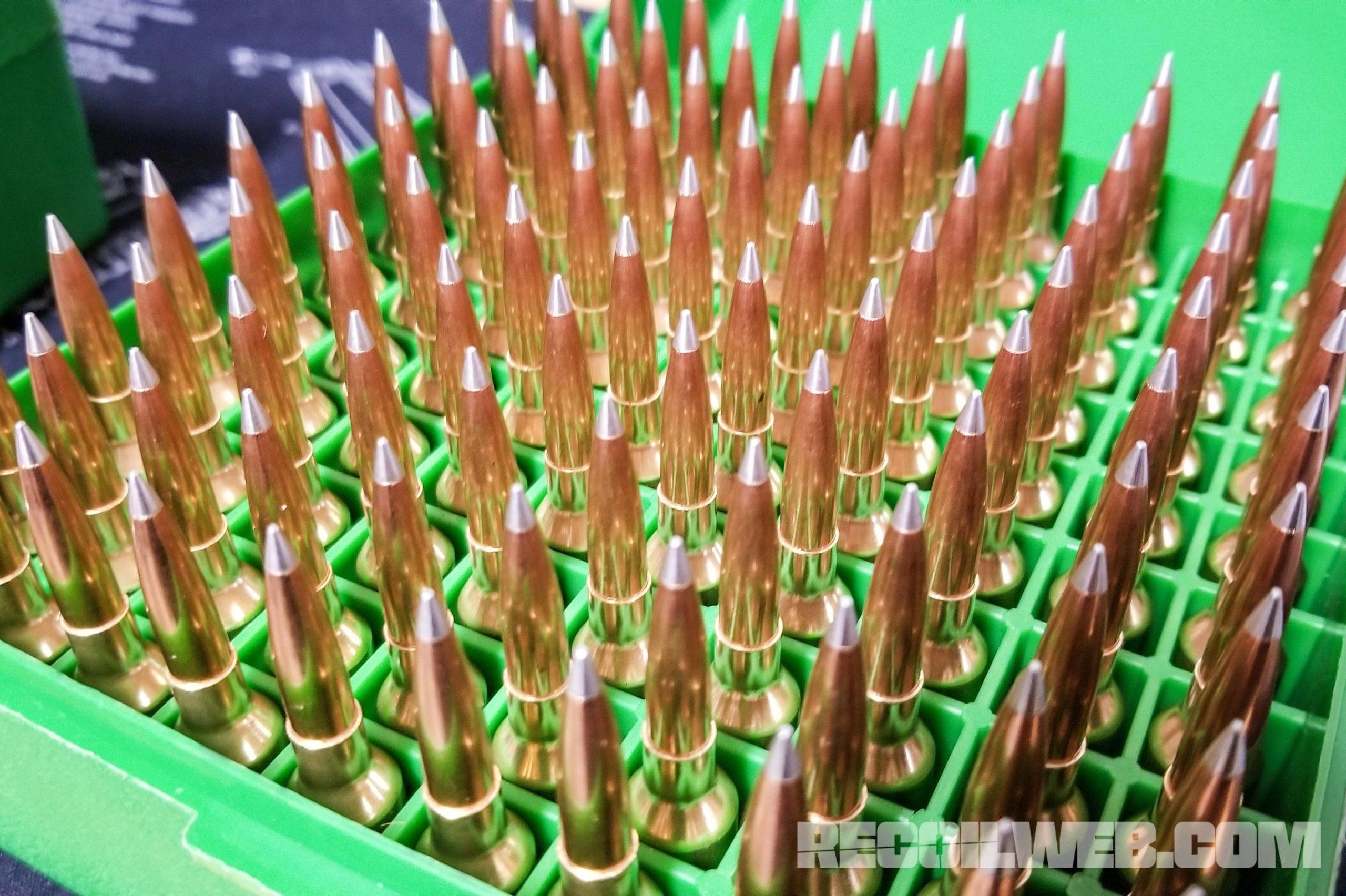At what range does es n sd become critical? What do some of you guys find acceptable for hunting rounds? Which I'm sure depends on how far your shooting which goes back to the first question. I'm not a long range shooter and wondering how much I should be worrying about it if I got decent groups with my loads. Thanks for any help
You are using an out of date browser. It may not display this or other websites correctly.
You should upgrade or use an alternative browser.
You should upgrade or use an alternative browser.
ES and SD question
- Thread starter Rilow
- Start date
 Help Support Long Range Hunting Forum
Help Support Long Range Hunting Forum
LaHunter
Well-Known Member
Based on your post, I would say don't concern yourself at all with SD or ES. If you are already getting groups that you are satisfied with at your max range, and you are not a long range shooter, you are all set.
If you start wanting to extend your range, then ES and SD become more important as range increases.
If you start wanting to extend your range, then ES and SD become more important as range increases.
How much of an issue is it at 3-400yds? Thank you infoBased on your post, I would say don't concern yourself at all with SD or ES. If you are already getting groups that you are satisfied with at your max range, and you are not a long range shooter, you are all set.
If you start wanting to extend your range, then ES and SD become more important as range increases.
Mikecr
Well-Known Member
Punch it into ballistic software.
The limit(in this regard) is where you'll potentially exceed your killzone.
Different for groundhogs -vs- caribou.
Keep in mind also that precision(grouping) and accuracy and cold bore accuracy are separate and different things.
Same with velocity spreads(hot-vs-cold).
The limit(in this regard) is where you'll potentially exceed your killzone.
Different for groundhogs -vs- caribou.
Keep in mind also that precision(grouping) and accuracy and cold bore accuracy are separate and different things.
Same with velocity spreads(hot-vs-cold).
Deputy819
Well-Known Member
Agree with 'LaHunter'. Doesn't sound like it should matter much in your case. However, I'd say a 'general' answer to your question(s) would be beyond ranges of 300 yards. I've seen loads that shot 1/4 moa at 200 yards that had an ES of close to 50. So, if you never shot beyond 200 yards then in the aforementioned case it wouldn't matter much. What's the 'max' distance you're shooting your loads to?
I've seen some 50-75fps extreme spreads had loads from friends that have laid down some respectable 350 yard groups. 2" range. That's about as big of a ES as I have seen, but I handload everything I shoot. If you are getting satisfactory groups at your "max range" then by all means forget ES exists. At conventional rifle hunting distances it is of little significance
Bang4theBuck
Well-Known Member
Not to.over complicate the issue, but to me it depends partially on the root cause of your high ESs. If you are loading with a powder that is extremely temp sensitive, you might be better to load with a different powder. It really all depends on what the drop data tells for for the dofferemce between highs and lows and the range you are shooting at. Personally, you have all of the resources available to you to reduce the ES on your loads, why not try for the best load you can?
Doom2
Well-Known Member
At that range in a 223 it matters quite a bit but in 300 win mag it isn't going to matter much. It mostly a function of bullet drop and target vital zone size.
Go to a ballistics site like JBM and run drops for your rifle/load and very the velocity to see how the drops at range change.
Without getting to deep in the weeds, looking at standard deviation, the velocity variation for 95% probability is the average plus or minus 2xSD.
Go to a ballistics site like JBM and run drops for your rifle/load and very the velocity to see how the drops at range change.
Without getting to deep in the weeds, looking at standard deviation, the velocity variation for 95% probability is the average plus or minus 2xSD.
TRG65
Well-Known Member
- Joined
- Dec 21, 2017
- Messages
- 426
Here are a couple of articles that talk about SD and ES. The recoil web article has some nice graphics for various ranges. The 2d pr blog boils it down to once you are under 10 SD, then compared to a load with an SD of 3, less than 2 shots out of 100 will be misses on a 1k 20" target because of velocity fluctuations. The overall summary shows the biggest impacts.
I use an amp annealer, and a auto trickler to weigh charges to the .02. How the rifle likes a powder and that specific amount still comes into play in a big way. For a 5 shot chrono, most of the loads I end up using are about a 5-8 with new brass. Once the brass gets older or the barrel wears, then that usually drops to 10-12. My ESs usually go from low 20s to about 40 as the barrel wears. By the time I see ESs of 40'ish, I'm also seeing random flyers and getting frustrated when I try to shoot long. Then the rifle gets a new barrel.

 precisionrifleblog.com
precisionrifleblog.com

 precisionrifleblog.com
precisionrifleblog.com

 www.recoilweb.com
www.recoilweb.com
I use an amp annealer, and a auto trickler to weigh charges to the .02. How the rifle likes a powder and that specific amount still comes into play in a big way. For a 5 shot chrono, most of the loads I end up using are about a 5-8 with new brass. Once the brass gets older or the barrel wears, then that usually drops to 10-12. My ESs usually go from low 20s to about 40 as the barrel wears. By the time I see ESs of 40'ish, I'm also seeing random flyers and getting frustrated when I try to shoot long. Then the rifle gets a new barrel.

How Much Does It Matter? Overall Summary
As long-range shooters, we tend to obsess over every little detail. After all, we’re trying to hit r...

How Much Does SD Matter?
As long-range shooters, we tend to obsess over every little detail. After all, we’re trying to hit r...

Chasing Muzzle Velocity Standard Deviation and Extreme Spread for Precision Rifle Shooting
How important are muzzle velocity, standard deviation, and extreme spread for long range rifle shooting? Learn how to figure this out... Read more...
BrentM
Well-Known Member
Reasonable SD and ES are not a concern within 400 and even 500. I have shot well under MOA groups at 400 with an es of 150 while testing loads.
If I was simply looking for hunting range, within 400, and on larger animals, deer size and up, I'd just look for accuracy and not even bother with fps spread if it was reasonable. For me, reasonable would be SD under 20 and ES under 40. I think this easy to do with decent practices.
If I was simply looking for hunting range, within 400, and on larger animals, deer size and up, I'd just look for accuracy and not even bother with fps spread if it was reasonable. For me, reasonable would be SD under 20 and ES under 40. I think this easy to do with decent practices.
DFHarley19
Active Member
Following...
Bang4theBuck
Well-Known Member
I don't disagree with all of the folks stating that the ES/SD doesn't really come into play at ranges under around 500 Yards. However, I happen to believe that in a hunting scenario, there always seem to be 'other factors', and 'opportunities' to make mistakes, that could cause you to make a poor shot. Examples might be if your range finder happen to read off of a rock or other hard surface that is a few yard ahead of or behind that target, or the incline is a little different that you assumed it to be, or because of a mediocre rest, based on your shooting location, or whatever, I like to have all of the 'error' that can be removed from the equation before I hit the field to hunt to be removed. I call it error stacking. Most of the time, it seems like one small error will not prevent you from being successful. When you start stacking errors upon other errors, things can get wierd really fast, and the chances for a miss go up.
Here are a couple of articles that talk about SD and ES. The recoil web article has some nice graphics for various ranges. The 2d pr blog boils it down to once you are under 10 SD, then compared to a load with an SD of 3, less than 2 shots out of 100 will be misses on a 1k 20" target because of velocity fluctuations. The overall summary shows the biggest impacts.
I use an amp annealer, and a auto trickler to weigh charges to the .02. How the rifle likes a powder and that specific amount still comes into play in a big way. For a 5 shot chrono, most of the loads I end up using are about a 5-8 with new brass. Once the brass gets older or the barrel wears, then that usually drops to 10-12. My ESs usually go from low 20s to about 40 as the barrel wears. By the time I see ESs of 40'ish, I'm also seeing random flyers and getting frustrated when I try to shoot long. Then the rifle gets a new barrel.

How Much Does It Matter? Overall Summary
As long-range shooters, we tend to obsess over every little detail. After all, we’re trying to hit r...precisionrifleblog.com

How Much Does SD Matter?
As long-range shooters, we tend to obsess over every little detail. After all, we’re trying to hit r...precisionrifleblog.com

Chasing Muzzle Velocity Standard Deviation and Extreme Spread for Precision Rifle Shooting
How important are muzzle velocity, standard deviation, and extreme spread for long range rifle shooting? Learn how to figure this out... Read more...www.recoilweb.com
Thanks for the links!